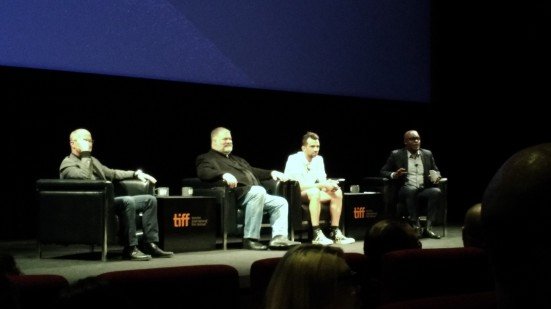
Minority-Review’s Swati Sharan hunting down celebs at TIFF 2018
<By Swati Sharan>
As the beginning of the Toronto International Film Festival (TIFF) unfolded this year, we knew Indians were on the rise once again with Dev Patel’s Hotel Mumbai about the Mumbai attacks in 2008. The man never ceases to amaze no matter what avatar he dons. And while Hollywood was abuzz with films like A Star is Born or This Changes Everything based on the #TimesUp movement, we also had many smaller precious gems to choose from. One of them I proudly proclaim as being one of Canada’s best animated shorts: Biidabaan. While yet another marvel was Manto, which I also gave a rare rating of 5/5.
But whatever the ratings, the consistent theme in my journey with TIFF this year was learning about films from behind-the-scenes. This was regardless of whether it was an animated blockbuster like How to Train Your Dragon: A Hidden World or for Manto or The Sweet Requiem. In one instance, the behind-the-scenes required imagining a fantasy while another required recreating a reality dated in time and space.

The How To Train Your Dragon: A Hidden World behind-the-scenes
Whereas Delhi was flooded with colours, the travelling scenes from Tibet in A Sweet Requiem were contrasted with a stark blue-greyishness to characterise the Tibetan refugee struggle. In the Q and A of the film screening, in fact, the film’s producer Shrihari Sathe remarked how efforts towards realism were made intentionally.
“It’s a fictional film but it is inspired by a lot of conversations. Even Dorji, led a similar journey when he was a kid. People have left Tibet and cannot go back to visit their families. That’s one of the reasons we wanted to make this film. It was to show what is the current situation in Tibet.”
He further states, “The present time takes place in Delhi, and, in particular, two neighbourhoods. One is Ramesh Market, which is populated by Indians where Dolkar lives and the Tibetan Settlement Office is in Majnu Ka Tilla, which is where the character of Gompo is living. So the film goes back and forth. But one of the things we wanted to show is that there is a very large Tibetan population in India. Some of them have been born and brought up in India so we wanted to show that kind of dichotomy.”

People walking around exploring TIFF 2018
And if watching behind-the-scenes was not enough, interviewing others who were at the helm of it all was also a thorough and deep process as you can see with our interviews with Nandita Das and Brahmanand Siingh.
But irrespective of your take, one thing remains clear. Realities are subjective. Whether they are fictional, non-fictional, in the present or the future, every detail must be finely construed. So let’s take this moment to appreciate it all. Enjoy reading all our reviews as much as I enjoyed visiting TIFF 2018.



0
comments